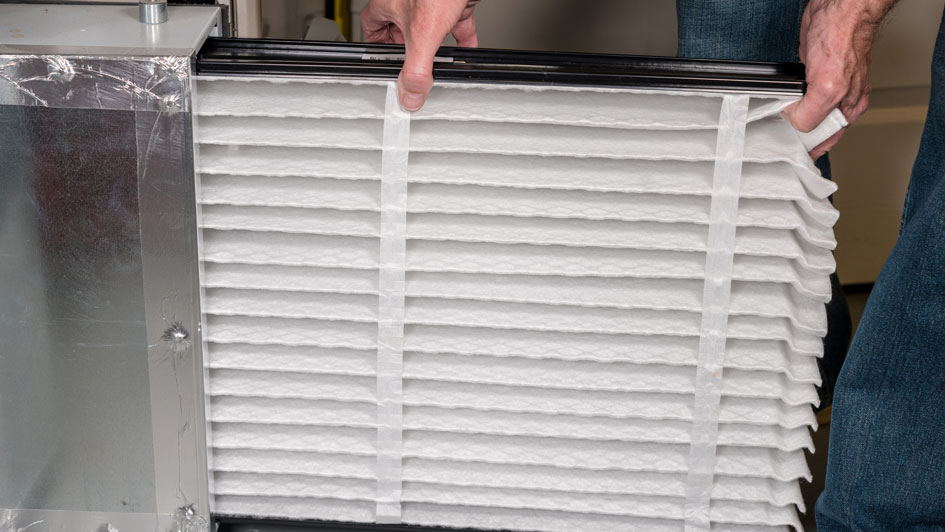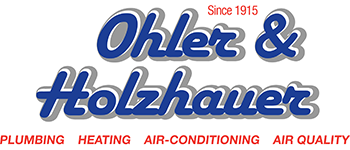
Choosing the correct furnace filter and changing it when it becomes dirty is as important to your HVAC system as changing the oil is to your car. Each plays a vital part in keeping its system running safely, efficiently and for a long time.
A clogged furnace filter loses its effectiveness, enabling potentially harmful particles to flow through your home. It also limits airflow, which can damage your furnace and shorten its life span.
Making certain your furnace uses a clean filter that is ideal for your needs is not merely about keeping your furnace operating efficiently. It’s also about delivering healthy indoor air quality for your household.
The health of your family is important to the heating and cooling specialists at Ohler & Holzhauer Inc.. We've long been dedicated to bettering indoor air quality in Port Clinton. Here, we’ve answered frequent questions about HVAC filters, including that particularly tricky question of what direction do you point a filter in your furnace or air conditioner?
When to Replace the Air Filter in Your Furnace
Experts stress it's important to replace dirty air filters in a furnace or air conditioner regularly. Dirt-clogged filters cause the system to worker harder than it should because it takes extra effort to force air through the plugged-up filter.
Officials advise checking your furnace filter every month and replacing it if it’s dirty. You’ll know if your filter needs changing because it will be gray or black from dirt or dust. Homeowners who have pets will probably need to replace their furnace air filter more often, because a good air filter will trap pet hair circulating in a home.
How to Find the Furnace's Air Filter
In general, a furnace air filter is commonly located in the return air duct or blower compartment before the return air reaches the furnace. This is so air being pulled into the system is filtered before it passes through the furnace components and is heated.
Depending on the type of furnace, the filter may be positioned on the right, left, bottom or in some cases, within the furnace. It's typically housed inside of a slot, frame or cabinet for simple access and replacement. Always refer to your furnace's owner manual for information concerning filter location of the furnace in your home.
Is My Furnace Filter Just a Type of Air Filter?
The easy answer is, yes. In HVAC, a furnace filter and an air filter or AC filter are basically the same. While people may call them different things based on the current season— summer or winter—they are all filters that clean the air in your HVAC system.
They each eliminate dust, allergens, bacteria and other contaminants from the air that is drawn into the furnace and air conditioning system, making sure the air circulating throughout your home is clean and safe.
What Is a MERV Rating and What Rating Is Best for Me?
Once you locate your old furnace filter and determine when it should be substituted for a clean one, it’s time to choose a replacement. That means deciding on the level of filtration that you need. One way to do that is by choosing an appropriate MERV rating for your needs.
MERV is short for Minimum Efficiency Reporting Values. The MERV rating calculates the effectiveness of air filters at trapping airborne particles. The rating scale ranges from 1 to 20, with bigger numbers indicating a greater ability to filter small particles.
Experts say a filter with a MERV rating between 8 and 13 offers a good balance between having adequate indoor air quality without unnecessarily restricting airflow. However, people with certain health conditions might need a a higher MERV rating.
Where to Insert the Air Filter in a Furnace or Air Conditioning System
Installing an air filter in a furnace or air conditioner properly is important for the efficient operation of the system. Air filters have a particular direction, indicated by an arrow printed on the side of the filter frame. The filter should be installed with this arrow pointing toward the furnace or air conditioner, which is the direction of the airflow. If you're not sure about the airflow direction, it may be helpful to remember that air always moves from the return duct and then to the heat or cooling source. Therefore, be sure that the arrow points toward the furnace or AC.
Many people have difficulty remembering which direction to face their air filter. To help remember, consider taking a picture with your cellular phone after the filter has been accurately installed by a professional. Or, you also could ask a technician to use a marker to write on the outside of your furnace which direction the filter should go. A perfect time to ask about this is during a regular furnace maintenance visit.
Changing Your Furnace's Air Filter
Replacing the filter on your furnace or air conditioner is a simple process. Here is a step-by-step list of how to remove a dirty air filter and swap it for a new one:
- Turn off your furnace: Make a point to shut off your furnace before starting the process.
- Look for the furnace filter: Typically, the filter is positioned inside the furnace or in the air return vent. Make a mental note or write down which direction the arrow points on the filter, because you’ll want the arrow on the new filter to point similarly.
- Take out the old filter: Be diligent not to knock out any dust or debris.
- Note the date: Write down the date you replaced the filter on the new filter's frame. This will help you keep track of when it's time for you to change it again.
- Put in new filter: Put in the new filter with the arrow pointing at the furnace, which is the direction of airflow and should be the same direction the arrow pointed on the dirty filter you just removed.
- Secure the filter: Make sure the new filter fits nicely and close any latches or clips that lock it in the compartment.
- Turn on your furnace: Once the replacement filter is safely installed, you can turn your furnace back on.
Can a Dirty Air Filter Cause Problems for a Furnace?
The shortest answer is, yes, a dirty air filter can cause a furnace to stop working or shorten its lifespan. Changing your furnace or air conditioning filter is one of the simplest things you can do to keep your system working effectively.
